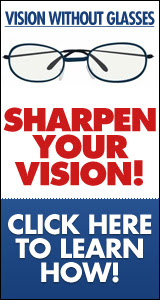Yoga Helps Children With AD/HD
![]() Darlene D’Arezzo, Guest Writer
Darlene D’Arezzo, Guest Writer
Waking Times
Attention deficit/hyperactivity disorder (AD/HD) is a chronic, neurobehavioral condition characterized by pervasive inattention, and/or impulsivity and hyperactivity. According to the Center for Disease Control, 4.4 million children and young adults have been diagnosed with AD/HD; it is the most common psychiatric disorder among children. AD/HD affects home-life, schoolwork and interpersonal relationships.
Some children with AD/HD may appear dazed and confused, forgetful, have difficulty getting started or staying on task, or focused on an activity; they cannot resist distraction or control their attention. Some may seem uncoordinated, slow moving and sluggish. Inattentive children also seem shy and withdrawn. Those with impulsivity-hyperactivity may be able to pay attention, but lose focus because they cannot control their impulses. They speak out or act before thinking or waiting their turn; they cannot self-monitor or self-evaluate their thoughts and actions. Others may be restless: they fidget, squirm and flit.
Impulsive-hyperactive children seem aggressive, making peer interactions difficult. AD/HDers are imaginative and inventive, often scoring very high on tests of creativity. It may be that the underlying neurological processes associated with AD/HD also cultivate creativity. Personality traits such as inattention and daydreaming, hyperactivity, playfulness and hypersensitivity are also common in highly creative people.
There is no simple medical test to diagnose AD/HD and the exact cause of AD/HD remains undetermined; the strongest evidence points to neurobiological conditions and genetic and hereditary factors. Research also suggests that nutritional deficiencies, prenatal and environmental or toxin influences may be linked to the disorder.
Yoga is an effective complementary treatment for children with AD/HDYoga, a combination of physical postures, breathing exercises and meditation techniques, develops a mind/body connection that many children with AD/HD struggle with. It also gives children the tools to self-regulate. Behavior modification is the only non-medical treatment for AD/HD with a large scientific evidence base. Although researchers called for larger studies on the benefits of yoga practice, their report published in the Journal of Attention Disorders, recognizes yoga as an effective “complementary treatment” for children already taking medication to manage their AD/HD.
The physical benefits of a hatha yoga practice include heightened body awareness and coordination. The skillful, organized interaction of movements or the repetition of movements of the body into and out of postures help AD/HDers learn how to organize themselves and gain control over their bodies. Methodical, complex patterns of movement help to organize the brain and contribute to nerve growth. Moreover, repetition of movement, and the alternation of stretching and contracting muscles increases circulation to the larger superficial skeletal muscles, increasing strength and flexibility, preparing the body for holding postures still. Deep physiological changes occur through holding static postures.
 Postures that challenge balance and require core stabilization stimulate the cerebellum, that part of the brain responsible for balance and coordination of movement. In addition, children with AD/HD are usually right-brain dominant in their information processing and learning styles. Therefore, the kinesthetic nature of yoga is perfect for these types of learners. As children learn about their bodies through yoga postures, they learn about their minds and emotions through breathing exercises and meditation techniques.
Postures that challenge balance and require core stabilization stimulate the cerebellum, that part of the brain responsible for balance and coordination of movement. In addition, children with AD/HD are usually right-brain dominant in their information processing and learning styles. Therefore, the kinesthetic nature of yoga is perfect for these types of learners. As children learn about their bodies through yoga postures, they learn about their minds and emotions through breathing exercises and meditation techniques.
Breath awareness control is one of the most naturally effective ways to safely regulate emotions and improve well-being. Meditation trains the mind. As sage Patanjali defines it, it is “sustained concentration” and moreover, “yoga is the ability to direct and focus mental activity.” Simply, it is moving from distraction to attention to sustained attention or concentration. Its practice improves focus, concentration and memory.
AD/HDers often feel as if they cannot control the countless thoughts cluttering their heads. Their brains cannot screen out unimportant stimuli while letting in what is important; there is little room left for introspection. Attention problems stem from these auditory and visual sensory overload issues.
Meditation exercises also alter the physical structure of our brains according to researchers at Harvard, Yale, and the Massachusetts Institute of Technology. They have found that meditators have increased thickness in parts of the brain associated with attention and processing sensory input. This is good news for children with AD/HD, as a study published by the Journal of the American Medical Association found that they have a brain about three percent smaller than that of a typically developing child.
Through breathing exercises and meditation techniques, children also learn self-discipline. They can self-evaluate and self-control their thought patterns, emotions and actions, thus curbing impulsivity and hyperactivity. These practices also promote self-awareness, self-expression and self-reflection.
Overall, the most profound benefits of yoga practice are improved self-esteem and a greater sense well-being. With new found confidence, AD/HDers can make friends. After all, yoga is a process of not only learning about and finding peace in oneself, but of living harmoniously with others.
About the Author
Darlene D’Arezzo is founder and Director of Kids’ Yoga Circle – KidsYogaCircle.com.
This article originally appeared at Yogi Times.
~~ Help Waking Times to raise the vibration by sharing this article with the buttons below…
